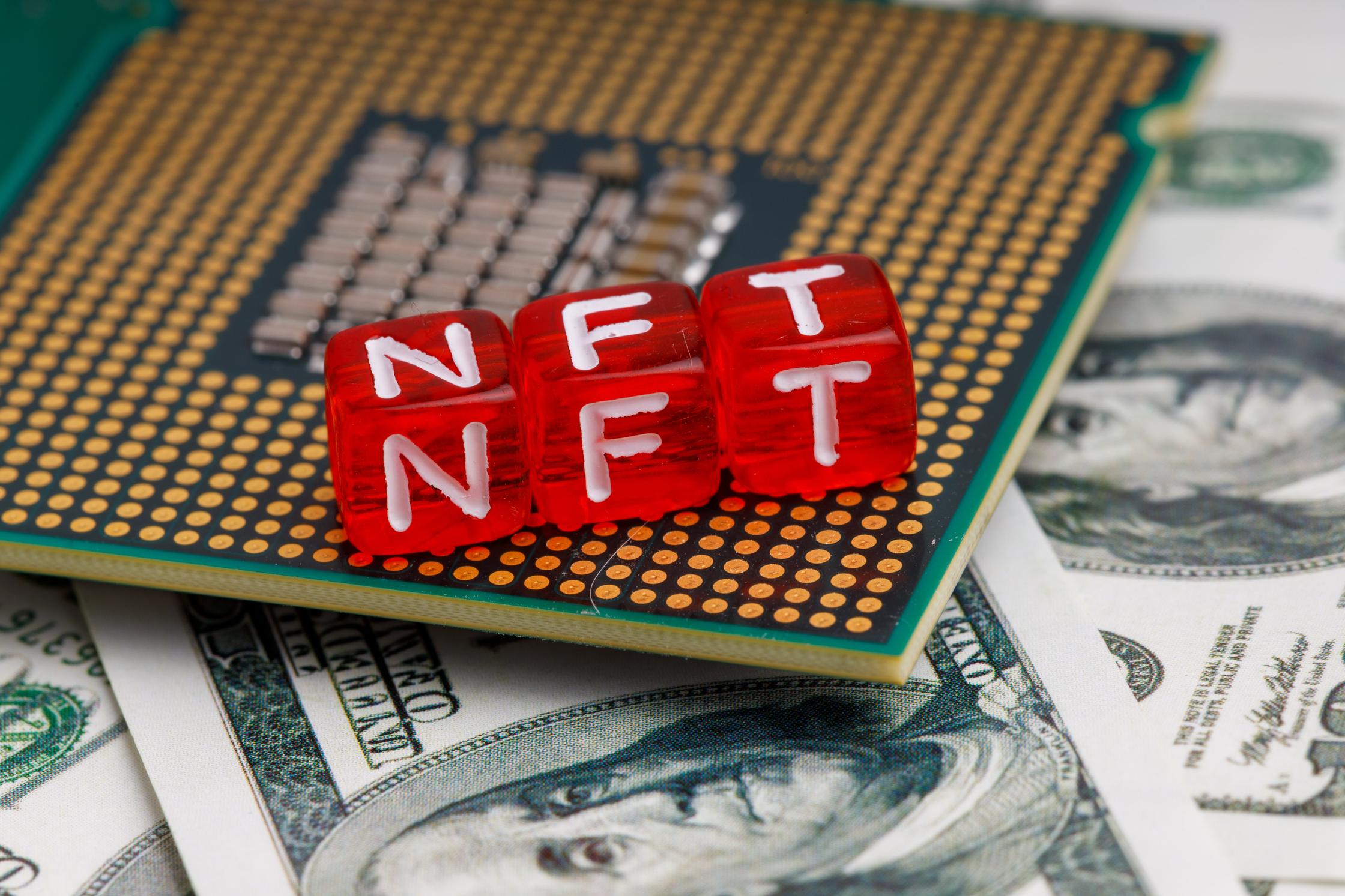This is blog 2 of the MicroMemberships project. Read blog 1.
In our search for open and fair revenue models for creative makers, it is difficult to ignore a development that receives a lot of attention from many crypto investors: Web3. This development is relevant to our research, as a number of applications for Web3, such as NFTs and DAOs, could be of interest to creative makers. Web3 adherents stand for the same ideal; Web3 enthusiasts also say they are looking for applications that stay away from platformisation. In this blog we explore the potential of these technologies and their underlying ideas. While those ideas are inspiring, Web3 is nothing more than old ideas parading as new ones, as we'll argue in this blog.
Web3 is the successor to Web1 and Web2. Web1 is the Internet before 2005. Web1 was decentralised and consisted of a large number of independent servers. You could host such a server or set up a server yourself. Web1's Internet consisted of a large amount of static web pages. These pages were mostly informative. There was limited opportunity to respond as a website visitor via an HTML form; in the first instance you could only leave a message in the 'guest book'. Web1 later also became the internet of the online forums, which ran through the same HMTL form. Interaction with Web1's servers was slow.
The centralisation battle of Web2
From 2005 until the present day we have been engaging with with 'Web2'. The era of Web2 can be recognised by interactive web pages, as opposed to the static documents of Web1. Web pages are becoming dynamic and the interaction with the server is no longer just via a form, but via the programming language in the browser (Javascript). That degree of interaction between users compared to Web2 is of a different order than Web1. The amount of user generated content has taken off with the arrival of Web2. As a user you can now leave different forms of content in addition to a written response. Web2 was – compared to the static pages of its predecessor – a considerable technical step forward and made many new applications possible.
Web2, however, also has its drawbacks. When Web1 evolved into Web2, the Internet went through a major turn of centralisation. Users moved to popular interactive web pages such as the Hyves and (the) Facebook. Owners of those pages monetised their users' behavior and kept it (and control of the platform) to themselves. The platforms as we know them today were born.
To illustrate the difference between Web1 and Web2, we can examine WhatsApp which was spawned by Web2. You can only communicate via Whatsapp if the recipient also downloads Whatsapp. Otherwise, the other person will not receive your messages. In comparison, with the e-mail protocol from the Web1 era you could reach another person by e-mail, regardless of whether they use Outlook or xs4all. As a Web user, in order to reach someone, you will have to download the app that person is using – whether you like it or not. So it's hard to get around popular apps like Whatsapp, regardless of the reputation of the owner. The messages and photos you send via Whatsapp cannot or can barely be send to other platforms - if there is an alternative where you can reach the same group of people.
The old and the new Web3
And then there's Web3. Web3 has been around for years. The term was coined by Tim Berners-Lee, one of the founders of the worldwide web who called Web3 the semantic web. In addition to linked web pages, the semantic web also consists of linked data structures. Where Web1 and 2 used to be a web of pages, the semantic web makes the content of those web pages transparent and universally available. The current Web3 that we hear about today is not Berners-Lee's original Web3. The term "Web3" has since been appropriated by crypto investors and framed as the inevitable successor to Web2. When they speak of Web3, it is about an internet service that uses a 'decentralised' ledger system (blockchain) on which cryptocurrencies such as Etherium run. Web3 claims that – unlike the platforms that have become so dominant with Web2 – users are at the helm of this internet. That sounds like a nice idea (and we'll get to that later in this blog).
Packy McCormick, one of the crypto investors who popularised Web3, has defined Web3 “as the Internet owned by builders and users, organised using tokens. Using exchangeable and non-exchangeable (non-fungible) 'tokens', users can appropriate pieces of the internet themselves. With non-fungible tokens (NFTs), the owner receives (non-legally enforceable) certificates of ownership over parts of the internet. This can be anything - services, art, tweets, photos, etc.
NFTs could be a way for creative makers to take control of their content. They are then not dependent on a platform (you often cannot transfer 'content' published on large platforms to other platforms). After all, online content is infinitely shareable, but these unique certificates that refer to a digital object are not. NFT holders would thus be able to undermine the power of major Web2 platforms.
In addition to NFTs, there are also DAOs, decentralised, autonomous organisations. With DAOs there is no central authority, but the founders or members determine the organisational structure, rules and agreements in so-called 'smart contracts' in which participants in that organization have, for example, digital voting rights. This may concern the distribution of money or the development of a protocol. The smart contracts execute these commands automatically after voting. The agreements are stored in a blockchain.
The Irony of Web3
Web3 sounds like an enticing perspective. On the face of it, it's an open decentralized infrastructure that anyone can participate in and that seems to stay away from the platformisation dynamics of Web2. The end user is in charge again. But mind you, those who paint this ideal have often put their money on this crypto Web3.
The irony is that we as simple users or creative makers do not have access to such a ledger with our mobile phone or via our browser, as researcher and entrepreneur Moxie Marlinspike describes in his critical reflection on Web3. Companies therefore offer a service to enable access to that node and, on the basis of data collection, also build improved APIs and gain access to all kinds of transactions. That in turn makes you look suspiciously at the centralised platformisation dynamics of Web2.
In addition to these technical "flaws", we could consider the phenomenon of cryptocurrencies as a form of hyper-platformisation. The currency, usable for everyone in the 'ordinary world', strictly regulated and supervised, has been appropriated in the world of Web3 by a number of (often already privileged) investors. This group colonises the regular payment system by persuading people to do all kinds of basic economic transactions in cryptos.
They do so because the number of coins, the shares in a currency, is finite. Cryptocurrencies generate an (artificial) scarcity, from which the designers and early investors then reap the benefits. As they generate more demand (‘you have to get in now!’) their cryptos become more and more valuable. As a late starter, you will see your savings evaporate with every jump that the volatile currency makes.
Cryptocurrencies suddenly look a lot like an unsolicited intermediary who tries to earn money from you. Web3 appears to be another attempt by investors to offer a new, centralised service, this time under the banner of “decentralisation.” Crypto investors seem to be looking for a problem that can be solved with their Web3, as critics sometimes say.
Promising ideas
It seems that Web3 and blockchain don't seem to solve Web2's biggest problems. But we're not completely back to square one. The renewed attention to the importance of decentralisation certainly appeals to the imagination.
The decentralised autonomous organisations (DAOs), a non-hierarchical organisational form of Web3, consists of a group of individuals who, on the basis of their skills, contribute to online art or code, for example. That sounds interesting to creative makers who can unite in this way without a centralised entity, as it used to be a publisher or a powerful, disruptive platform that sets the rules, as seen in Web2. These types of organisations are often easily accessible: in principle anyone with the internet can contribute. An example of a DAO is the artist collective Tara Digital Collective, which has an online gallery for artists who are often underrepresented in the art world (and provides advice to artists who lack technical knowledge or experience other barriers).
DAOs are an interesting development in light of previous findings from our design research project 'Microdonor'. Together with a large number of experts, we concluded in this project that online 'creators' can unite in 'content collectives'. In these collectives, providers of high-quality, low-volume content can join forces with creators who offer a high volume of content. In addition, these collectives are a way to merge content and create new value-based networks.
Not all of the ideals behind DAOs, but also behind NFTs, sound sympathetic. As a creative maker, the idea of legally enforceable ownership (in a registry) of digital art, music, movies and books can sound appealing. The big recurring question with these kinds of innovative ideas is 'how do you make these agreements possible and keep them afloat without depending on cryptocurrencies’? This question is about mutual trust on the world wide web. And that cannot simply be answered with the flat revenue model of Web3.
Nevertheless, both concepts help us think about how open and fair revenue models should be shaped. They generate ideas about how you could organise yourself as an artist online and how you could collaborate without (or with minimal) intervention from third parties. In upcoming blogs, we'll explore the background and causes of these successive centralisation attempts and discuss whether it could be made much easier with simple, assistive technology.


